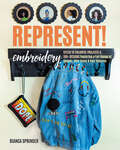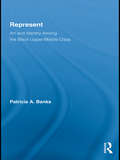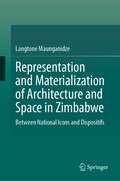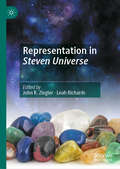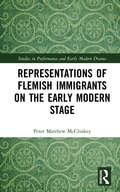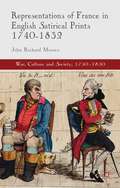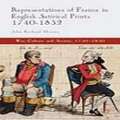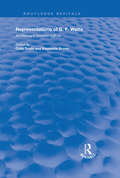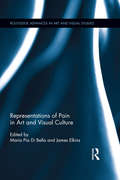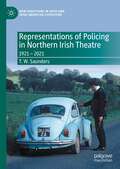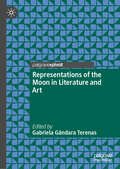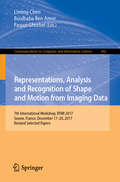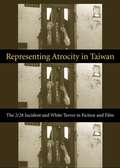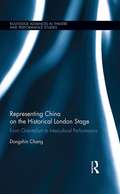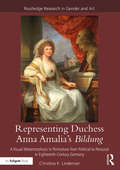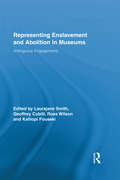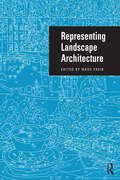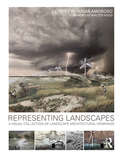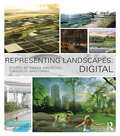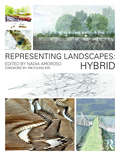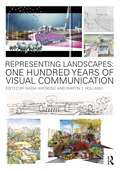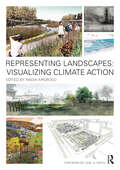- Table View
- List View
Represent! Embroidery: Stitch 10 Colorful Projects & 100+ Designs Featuring a Full Range of Shapes, Skin Tones & Hair Textures
by Bianca SpringerEmbroidery motifs for every hair type and person! Representation matters, and it’s finally time for an embroidery book that looks like you! Celebrate diversity with more than 50 embroidery motifs of people in a wide array of skin colors, body shapes, and natural hairstyles. No need for painstaking design alterations—you can simply jump right in and start stitching. Create 10 useful and stylish projects, from accessories to home decor. These inclusive embroidery projects represent every kind of beauty; see yourself and your loved ones in these designs. Expand your embroidery and sewing skills while increasing your appreciation of others! Celebrate beautiful YOU! Sew 10 fun projects, from wearable art to wall displays Embroider 50+ motifs in a full range of shapes, skin tones, and hair textures Includes small iron-on patterns and an envelope on the inside book cover for storage
Represent: Art and Identity Among the Black Upper-Middle Class (Routledge Research in Race and Ethnicity)
by Patricia A. BanksPatricia A. Banks traverses the New York and Atlanta art worlds to uncover how black identities are cultivated through black art patronage. Drawing on over 100 in-depth interviews, observations at arts events, and photographs of art displayed in homes, Banks elaborates a racial identity theory of consumption that highlights how upper-middle class blacks forge black identities for themselves and their children through the consumption of black visual art. She not only challenges common assumptions about elite cultural participation, but also contributes to the heated debate about the significance of race for elite blacks, and illuminates recent art world developments. In doing so, Banks documents how the salience of race extends into the cultural life of even the most socioeconomically successful blacks.
Representation and Materialization of Architecture and Space in Zimbabwe: Between National Icons and Dispositifs
by Langtone MaunganidzeThis volume is an empirical study examining the extent to which historic and iconic architecture and spaces in Zimbabwe - particularly in urban areas - have been mobilized to construct and reconstruct identities. The author explores the question of traditional and political architecture through analysis of a variety of structures, including monuments, museums, and indigenous and state buildings. Special attention is paid to the soapstone-carved Zimbabwe Bird, which for years has served as the national emblem. Overall, this book argues that while the production and use of architectural products and spaces have been regarded symbols of collective identity, they have also served as expressions of power and control.
Representation in Steven Universe
by John R. Ziegler Leah RichardsThis book assembles ten scholarly examinations of the politics of representation in the groundbreaking animated children’s television series Steven Universe. These analyses address a range of representational sites and subjects, including queerness, race, fandom, colonialism, and the environment, and provide an accessible foundation for further scholarship. The introduction contextualizes Steven Universe in the children’s science-fiction and anime traditions and discusses the series’ crucial mechanic of fusion. Subsequent chapters probe the fandom’s expressions of queer identity, approach the series’ queer force through the political potential of the animated body, consider the unequal privilege of different female characters, and trace the influence of anime director Kunihiko Ikuhara. Further chapters argue that Ronaldo allows satire of multiple media forms, focus on Onion as a surrealist trickster, and contemplate cross-species hybridity and consent. The final chapters concentrate on background art in connection with ecological and geological narratives, adopt a decolonial perspective on the Gems’ legacy, and interrogate how the tension between personal and cultural narratives constantly recreates memory.
Representations of Flemish Immigrants on the Early Modern Stage (Studies in Performance and Early Modern Drama)
by Peter Matthew McCluskeyImmigrants from the Low Countries constituted the largest population of resident aliens in early modern England. Possessing superior technology in a number of fields and enjoying governmental protection, the Flemish were charged by many native artisans with unfair economic competition. With xenophobic sentiments running so high that riots and disorders occurred throughout the sixteenth century, Elizabeth I directed her dramatic censor to suppress material that might incite further disorder, forcing playwrights to develop strategies to address the alien problem indirectly. Representations of Flemish Immigrants on the Early Modern Stage describes the immigrant community during this period and explores the consistently negative representations of Flemish immigrants in Tudor interludes, the impact of censorship, the playwrighting strategies that eluded it, and the continuation of these methods until the closing of the theatres in 1642.
Representations of France in English Satirical Prints 1740-1832 (War, Culture and Society, 1750-1850)
by J. MooresBetween 1740 and 1832, England witnessed what has been called its 'golden age of caricature', coinciding with intense rivalry and with war with France. This book shows how Georgian satirical prints reveal attitudes towards the French 'Other' that were far more complex, ambivalent, empathetic and multifaceted than has previously been recognised.
Representations of France in English Satirical Prints 1740–1832
by John Richard MooresBetween 1740 and 1832, England witnessed what has become known as its 'golden age of caricature'. This coincided with an era of dramatic social and political change both at home and abroad. In this period of intense international war and rivalry, Britain's relationship with France proved particularly turbulent, leading to suggestions that its national culture and identity was defined by its 'Francophobia'. Though they are often employed as shorthand evidence of hostility towards France, under closer scrutiny Georgian satirical prints reveal attitudes towards the French 'Other' that were far more complex, ambivalent, empathetic and multifaceted than has previously been recognised. At the same time, print satires purportedly dealing with French subjects were often commenting pointedly on British politics, society or culture, often in ways which revealed cultural insecurity rather than confident national superiority.
Representations of G.F. Watts: Art Making in Victorian Culture (Routledge Revivals)
by Colin TroddOriginally published in 2004. Once the most popular Victorian artist, G. F. Watts was also a complex and elusive figure. Influenced by evolutionary theory, he reinterpreted the tradition of the classical body, while his philanthropic and educational interests informed projects for a more affective public art. This book is the first modern account of the full range of Watts's different artistic interests and practices. Offering fresh approaches to his historical, allegorical and mythological paintings, it also traces his increasingly radical approach to portraiture and sculpture and examines the institutional and biographical factors behind his immense public profile. Together the essays present a comprehensive analysis of Watts's work and his vital relationship to the intellectual, cultural and social forces of his time.
Representations of Pain in Art and Visual Culture: Representations Of Pain In Art And Visual Culture (Routledge Advances in Art and Visual Studies)
by James Elkins Maria Pia Di BellaThe presentation of bodies in pain has been a major concern in Western art since the time of the Greeks. The Christian tradition is closely entwined with such themes, from the central images of the Passion to the representations of bloody martyrdoms. The remnants of this tradition are evident in contemporary images from Abu Ghraib. In the last forty years, the body in pain has also emerged as a recurring theme in performance art. Recently, authors such as Elaine Scarry, Susan Sontag, and Giorgio Agamben have written about these themes. The scholars in this volume add to the discussion, analyzing representations of pain in art and the media. Their essays are firmly anchored on consideration of the images, not on whatever actual pain the subjects suffered. At issue is representation, before and often apart from events in the world. Part One concerns practices in which the appearance of pain is understood as expressive. Topics discussed include the strange dynamics of faked pain and real pain, contemporary performance art, international photojournalism, surrealism, and Renaissance and Baroque art. Part Two concerns representations that cannot be readily assigned to that genealogy: the Chinese form of execution known as lingchi (popularly the "death of a thousand cuts"), whippings in the Belgian Congo, American lynching photographs, Boer War concentration camp photographs, and recent American capital punishment. These examples do not comprise a single alternate genealogy, but are united by the absence of an intention to represent pain. The book concludes with a roundtable discussion, where the authors discuss the ethical implications of viewing such images.
Representations of Policing in Northern Irish Theatre: 1921 – 2021 (New Directions in Irish and Irish American Literature)
by T. W. SaundersThis monograph provides the first sustained, chronological account of Northern Irish police officers’ representation in theatre. Importantly, its scope comprises a critical period of national and organisational development, beginning with the Partition of Ireland in 1921 and the founding of the Royal Ulster Constabulary (RUC) one year later in 1922. It progresses through the relevant theatrical and historical events of the century, through the period after the RUC’s dissolution and replacement with the Police Service of Northern Ireland (PSNI) in 2001, and concludes in 2021 to coincide with the centenary of Partition. As such, this project is distinctive in its ability to trace paradigm shifts in perceptions of the police over time, as they intersect with relevant historical events and milestones of political conflict in the province.
Representations of the Moon in Literature and Art
by Gabriela Gândara TerenasThis book brings together a collection of essays on the occasion of the fiftieth anniversary of the arrival of the first man on the moon – a time when tourist journeys to the moon, now a real possibility, were no more than a fantasy. Divided into four sections, illustrating different perceptions of the moon, the common aim of the essays in this book is to examine how mankind’s interest in the moon has been represented in Literature and the Arts, an objective underpinned by the desire to exploit the relationship between the so-called two cultures—the Humanities and Science—as C.P. Snow perceived them in his pioneering work (1959). The plethora of ways in which our companion satellite has been portrayed has led the authors of the essays to draw upon research from the history of science as well as from literary, cultural and artistic studies. In addition to analysing the impact on literature and music, of our arrival on the moon, whether real or imaginary, these studies also examine how writers along the centuries have appropriated the moon as a metaphor in order to project latent conflict, criticise the society or politics of their day, reflect upon scientific or technological discoveries or fantasise about journeys, encounters or imaginary realities.
Representations, Analysis and Recognition of Shape and Motion from Imaging Data: 7th International Workshop, RFMI 2017, Savoie, France, December 17–20, 2017, Revised Selected Papers (Communications in Computer and Information Science #842)
by Liming Chen Boulbaba Ben Amor Faouzi GhorbelThis book constitutes the refereed proceedings of the 7th International Workshop on Representations, Analysis and Recognition of Shape and Motion from Imaging Data, RFMI 2017, held in Savoi, France, in December 2017.The 8 revised full papers and 9 revised short papers presented were carefully reviewed and selected from 23 submissions. The papers are organized in topical sections on analyzing motion data; deep learning on image and shape data; 2D and 3D pattern classification; watermarking, segmentation and deformations.
Representing Atrocity in Taiwan: The 2/28 Incident and White Terror in Fiction and Film (Global Chinese Culture)
by Sylvia LinIn 1945, Taiwan was placed under the administrative control of the Republic of China, and after two years, accusations of corruption and a failing economy sparked a local protest that was brutally quashed by the Kuomintang government. The February Twenty-Eighth (or 2/28) Incident led to four decades of martial law that became known as the White Terror. During this period, talk of 2/28 was forbidden and all dissent violently suppressed, but since the lifting of martial law in 1987, this long-buried history has been revisited through commemoration and narrative, cinema and remembrance.Drawing on a wealth of secondary theoretical material as well as her own original research, Sylvia Li-chun Lin conducts a close analysis of the political, narrative, and ideological structures involved in the fictional and cinematic representations of the 2/28 Incident and White Terror. She assesses the role of individual and collective memory and institutionalized forgetting, while underscoring the dangers of re-creating a historical past and the risks of trivialization. She also compares her findings with scholarly works on the Holocaust and the aftermath of the atomic bombings of Japan, questioning the politics of forming public and personal memories and the political teleology of "closure." This is the first book to be published in English on the 2/28 Incident and White Terror and offers a valuable matrix of comparison for studying the portrayal of atrocity in a specific locale.
Representing China on the Historical London Stage: From Orientalism to Intercultural Performance (Routledge Advances in Theatre & Performance Studies)
by Dongshin ChangThis book provides a critical study of how China was represented on the historical London stage in selected examples from the late seventeenth century to the early twentieth century—which corresponds with the Qing Dynasty (1644-1911), China’s last monarchy. The examples show that during this historical period, the stage representations of the country were influenced in turn by Jesuit writings on China, Britain’s expanding material interest in China, the presence of British imperial power in Asia, and the establishment of diasporic Chinese communities abroad. While finding that many of these works may be read as gendered and feminized, Chang emphasizes that the Jesuits’ depiction of China as a country of high culture and in perennial conflict with the Tartars gradually lost prominence in dramatic imaginations to depictions of China’s material and visual attractions. Central to the book’s argument is that the stage representations of China were inherently intercultural and open to new influences, manifested by the evolving combinations of Chinese and English (British) traits. Through the dramatization of the Chinese Other, the representations questioned, satirized, and put in sharp relief the ontological and epistemological bases of the English (British) Self.
Representing Duchess Anna Amalia's Bildung: A Visual Metamorphosis in Portraiture from Political to Personal in Eighteenth-Century Germany (Routledge Research in Gender and Art)
by Christina K. LindemanThe cultural milieu in the “Age of Goethe” of eighteenth-century Germany is given fresh context in this art historical study of the noted writers’ patroness: Anna Amalia, Duchess of Weimar-Sachsen-Eisenach. An important noblewoman and patron of the arts, Anna Amalia transformed her court into one of the most intellectually and culturally brilliant in Europe; this book reveals the full scope of her impact on the history of art of this time and place. More than just biography or a patronage study, this book closely examines the art produced by German-speaking artists and the figure of Anna Amalia herself. Her portraits demonstrate the importance of social networks that enabled her to construct scholarly, intellectual identities not only for herself, but for the region she represented. By investigating ways in which the duchess navigated within male-dominated institutions as a means of advancing her own self-cultivation – or Bildung – this book demonstrates the role accorded to women in the public sphere, cultural politics, and historical memory. Cumulatively, Christina K. Lindeman traces how Anna Amalia, a woman from a small German principality, was represented as an active participant in enlightened discourses. The author presents a novel and original argument concerned with how a powerful woman used art to shape her identity, how that identity changed over time, and how people around her shaped it – an approach that elucidates the power of portraiture in eighteenth- and early nineteenth-century Europe.
Representing Enslavement and Abolition in Museums: Ambiguous Engagements (Routledge Research in Museum Studies)
by Ross Wilson Geoffrey Cubitt Laurajane Smith Kalliopi FousekiThe year 2007 marked the bicentenary of the Act abolishing British participation in the slave trade. Representing Enslavement and Abolition on Museums- which uniquely draws together contributions from academic commentators, museum professionals, community activists and artists who had an involvement with the bicentenary - reflects on the complexity and difficulty of museums' experiences in presenting and interpreting the histories of slavery and abolition, and places these experiences in the broader context of debates over the bicentenary's significance and the lessons to be learnt from it. The history of Britain’s role in transatlantic slavery officially become part of the National Curriculum in the UK in 2009; with the bicentenary of 2007, this marks the start of increasing public engagement with what has largely been a ‘hidden’ history. The book aims to not only critically review and assess the impact of the bicentenary, but also to identify practical issues that public historians, consultants, museum practitioners, heritage professionals and policy makers can draw upon in developing responses, both to the increasing recognition of Britain’s history of African enslavement and controversial and traumatic histories more generally.
Representing Landscape Architecture
by Marc TreibRepresenting Landscape Architecture offers a broad investigation of how the designed landscape is and has been represented: for design study, for criticism and even for its realization. It has been said that we can only realize what we can imagine. But in order to realize we must convey ideas to others as well as to ourselves. Representation is by no means neutral and the process of communication, the process by which the imagination takes its first form, itself necessarily limits the range of our design possibilities. Computers further remove from cognitive processes and raise new questions about methods and limits. Written by a team of renowned practitioners and academics, this book is the best available reference to date on the many dimensions of landscape representation.
Representing Landscapes: A Visual Collection of Landscape Architectural Drawings (Representing Landscapes)
by Nadia AmorosoWhat do you communicate when you draw an industrial landscape using charcoal; what about a hyper-realistic PhotoShop collage method? What are the right choices to make? Are there right and wrong choices when it comes to presenting a particular environment in a particular way? The choice of medium for visualising an idea is something that faces all students of landscape architecture and urban design, and each medium and style option that you select will influence how your idea is seen and understood. Responding to demand from her students, Nadia Amoroso has compiled successful and eye-catching drawings using various drawing styles and techniques to create this book of drawing techniques for landscape architects to follow and - more importantly - to be inspired by. More than twenty respected institutions have helped to bring together the very best of visual representation of ideas, the most powerful, expressive and successful images. Professors from these institutions provide critical and descriptive commentaries, explaining the impact of using different media to represent the same landscape. This book is recommended for landscape architecture and urban design students from first year to thesis and is specifically useful in visual communications and graphic courses and design studios.
Representing Landscapes: Analogue (Representing Landscapes)
by Nadia AmorosoThe fourth book in Nadia Amoroso‘s Representing Landscapes series, this text focuses on traditional methods of visual representation in landscape architectural education. Building on from the previous titles in the series, which look at digital and hybrid techniques, Representing Landscapes: Analogue is a return to the basic foundations of landscape architecture’s original medium of visual communication. Each of the 20 chapters includes contributions from leading professors teaching studio and visual communication courses from landscape architecture programs across the globe, showcasing the best student examples of analog techniques. It demonstrates the process from graphics as a form of research, design development, and analysis, to the final presentation through drawings, models and descriptive captions of the methods, styles and techniques used. It features critical and descriptive essays from expert professors and lecturers in the field, who emphasise the importance of the traditional medium as an intrinsic part of the research, design and presentation process. Over 220 full colour images explore the range of visual approaches students and practitioners of landscape architecture can implement in their designs. With worked examples in the chapters and downloadable images suitable for class use, this is an essential book for visual communication and design studios.
Representing Landscapes: Digital
by Nadia AmorosoMost landscape architectural designs now include some form of digital representation - but there is much more scope for creativity beyond the standard Photoshop montages. In this new book on representing landscapes, Nadia Amoroso brings together contributions from some of the leading landscape departments in the world to explore the variety in digital illustration methods. In each chapter, leading lecturers, professors and practitioners in the field of landscape architecture explain a specific digital approach with the use of images from their department to show how each technique can be used in inspirational examples. Throughout the book over 200 colour images cover the spectrum of digital representation to help discuss the various drawing types which are invaluable when communicating ideas in the field of landscape architecture. With worked examples in the chapters and downloadable images suitable for class use, this is an essential book for visual communication and design studios.
Representing Landscapes: Hybrid (Representing Landscapes)
by Nadia AmorosoHybrid and mixed media create a huge variety of diagramming and drawing options for landscape representation. From Photoshop mixed with digital maps, to hand drawings overlaid with photos and modelling combined with sketches, the possibilities are endless. In this book, Amoroso curates over 20 leading voices from around the world to showcase the best in contemporary hybrid design. With over 200 colour images from talented landscape architeture students, this book will explore the options, methods and choices to show the innovative approaches that are offered to students and practitioners of landscape architecture. With worked examples in the chapters and downloadable images suitable for class use, this is an essential book for visual communication and design studios.
Representing Landscapes: One Hundred Years of Visual Communication (Representing Landscapes)
by Nadia AmorosoThis volume provides an in-depth historical overview of graphic and visual communication styles, techniques, and outputs from key landscape architects over the past century. Representing Landscapes: One Hundred Years of Visual Communication offers a detailed account of how past and present landscape architects and practitioners have harnessed the power of visualization to frame and situate their designs within the larger cultural, social, ecological, and political milieux. The fifth book in the Representing Landscapes series, the presentations contained within each of the 25 chapters of this work are not merely drawings and illustrations but are rather graphic touchstones whose past and current influence shapes how landscape architects think and operate within the profession. This collected volume of essays gathers notable landscape historians, scholars, and designers to offer their insights on how the landscape has been presented and charts the development and use of new technologies and contemporary theory to reveal the conceptual power of the living medium of the larger landscape. Richly detailed with over 220 colour and black and white illustrations from some of the discipline’s best-known landscape architects and designers, this work is a ‘must-have’ for those studying contemporary landscape design or those fascinated by the profession’s history.
Representing Landscapes: Visualizing Climate Action (Representing Landscapes)
by Nadia AmorosoThis book provides an in-depth overview of graphic and visual communication styles for conveying climate change and climate action within the landscape architectural profession and in academia. The book features visualizations of climate adaptation and resilience, developed by award-winning landscape architects and academics from Canada, the United States, the United Kingdom, The Netherlands, Denmark, Germany, Italy, France, Finland, South Africa, Singapore, and China. Representing Landscapes: Visualizing Climate Action illustrates the imaginative ways in which climate action and climate resilient concepts are visually presented, communicated, and perceived. The book will be especially valuable for students and practitioners in landscape architecture, urban planning, and related fields to understand how to visually capture climate change issues and design solutions, and to deliver this message to the public.
Representing Reality: Issues and Concepts in Documentary
by Bill Nichols". . . a valuable and important book . . ." —The Year's Work in Critical and Cultural TheoryRepresenting Reality is the first book to offer a conceptual overview of documentary filmmaking practice. It addresses numerous social issues and how they are presented to the viewer by means of style, rhetoric, and narrative technique. The volume poses questions about the relationship of the documentary tradition to power, the body, authority, knowledge, and our experience of history. This study advances the pioneering work of Nichols's earlier book, Ideology and the Image."[Nichols] has written a road-block of a book which reconfigures the debate on the documentary at a new level of sophistication and complexity which can only be ignored at the risk of ignoring the whole area of documentary film." —Sight and Sound" . . . the most important book on documentary film yet published." —Canadian Journal of Film Studies
Representing Shakespeare: England, History and the RSC
by Robert ShaughnessyThis text traces the changing theatrical and cultural identity of the History plays in the context of postwar social and political conflict, crisis and change. Since the company's inception in the early 1960s, the RSC's commitment to relevance has fostered close relationships between Shakespearean criticism and performance, and between the theatre and its audiences. Through a detailed discussion of key productions, from "The War of the Roses" in 1963 to "The Plantegenets" in 1988, Robert Shaughnessy emphasizes the political dimension of contemporary theatrical representations of Shakespeare, and of the "Shakespearean" modes of history that these plays have been employed to promote; individualist, cyclical, male-dominated, and driven by essentialised, transcendent human nature.
